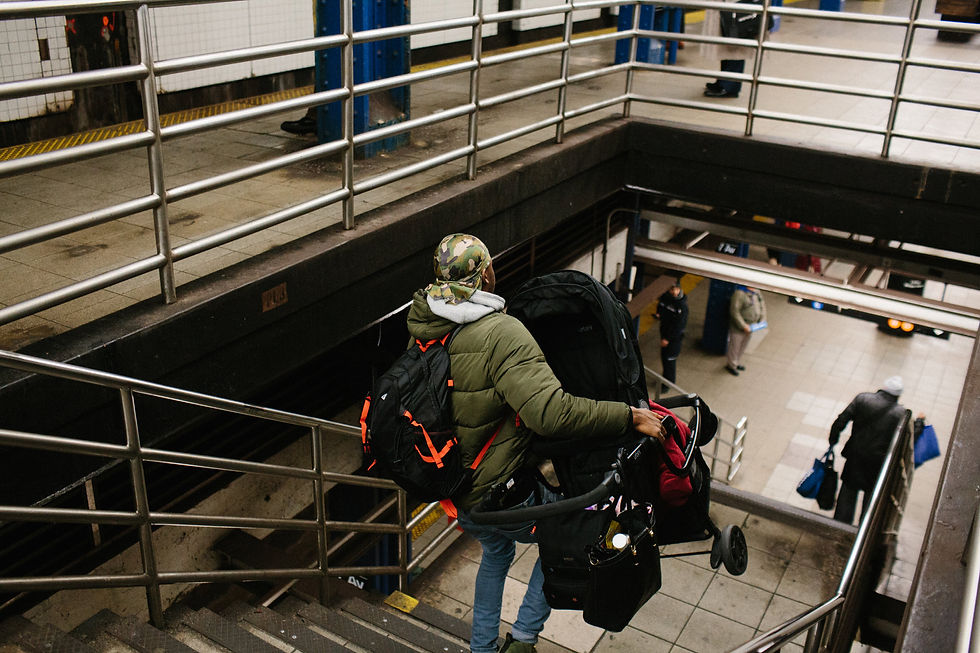Applying Behavioral Science to Everyday Challenges
- Daniel Seewald

- Dec 20, 2018
- 4 min read
Innovation does not happen in a vacuum. Since the world is made up of humans, not consumer segments, innovation must be designed with REAL people in mind rather than an idealized version of those people. What makes designing solutions for human beings so tricky, however, is that human beings make choices based on factors that can be observed, as well as unobserved. That is why we need to become, in the words of behavioral economists, Cass Sunstein and Richard Thaler, “choice architects.” As a choice architect, we set-out to better understand underlying motivations and beliefs so that we can “help nudge people to make better choices without forcing certain outcomes.” The tools that can be used are based on behavioral science and include: interviewing, mapping, providing structured choices and identifying and detailing incentives.

Consider the following real example:
Several years ago, I began to volunteer as a youth soccer coach. One of the perquisites that my team of youth soccer players had come to expect, and love, was a special treat at the end of each match. In the first season, I independently brought oranges or mini-doughnuts for the post-match celebration. In the second season, I began to democratize the treat giving by inviting the player’s parents to participate so that we could fairly distribute the responsibility. In this first attempt at enlisting parental help, I was able to successfully recruit half of the parents to contribute. This was accomplished through a simple letter at the start of the season, asking parents for their involvement. In the third season, the same letter and process yielded a lower response rate (approximately 30%) and the same families that usually volunteered were most likely to continue to contribute. One of the observations gleaned from my informal interviewing was that the parents, who consistently contributed, appreciated the recognition from the coach and the other parents. This invited a research question: how might I adjust the choice architecture to increase the rate of contributions from other parents?
The start of season four presented an ideal opportunity to test out my behavioral science enthusiasm and run an experiment. Similar to Seasons 2 and 3, I sent out a letter inviting parents to contribute. However, what differed in this experiment was that I created a simple, online sign-up via Google Documents, which enabled parents to see who was contributing and who was not contributing. The nudge worked quite well. In fact, the enrollment rate for snacks went up to 90% for that season. When I explored the topic of snack contributions with parents who had in the past been less likely to contribute, they were quick to point out that contributing “Was the Right Thing to Do.” Social acceptance plays a vital role in local communities and contributes to the sort of neighborhood trust and tribalism that has evolved in the suburban soccer fields and parks.
I was nearly satisfied with my ongoing suburban behavioral science exploits. But by the time Season 5 had rolled around, I was ready to employ one more behavioral nudge to see if I could achieve 100% with the snack contributions. Through the previous four seasons, I had always made contributions an “Opt-In” as opposed to an “Opt-Out” strategy. In recent years, the strategy of adjusting to an opt-out status under certain conditions has shown promise in influencing decision making behavior. This gave rise to my hypothesis that if everyone was obligated and had transparency into one another’s actions, the act of opting out might create enough social pressure which would increase the contribution rate to 100%.
Similar to Season 4, I sent out a note to all parents to visit the google document with the snack schedule. Only this time, I structured the choice differently: Every parent had already been pre-assigned a date and a turn to bring a snack. Additionally, I inserted a friendly clause that notified the parents that if they were not available for that day they could either drop off the snack or swap dates with another parent. While no parent backed-out of their obligation, initially I was cautiously optimistic because they could arguably just not show up and fulfill this default obligation. By the end of the season, snacks appeared at every match and behind the scenes parents swapped dates without any noticeable friction or coaching involvement. Amazingly, we had snacks for each game. The adjustment of the choice was a subtle change for the parents and it yielded a 100% contribution rate.
While the outcome and circumstances are relatively trivial (that is, unless it’s your voracious child), the practice and insights are applicable to virtually any situation in which there is an optional activity which is yielded underwhelming results. Imagine the next time you are faced with the mundane task of collecting donations for your boss’s gift or recruiting volunteers for a PTA function and think about how might you employ the principles of experimentation and adjusting choice options. By testing, adapting and learning you will quickly learn new ways of modifying customer behaviors and you will be well on your way to becoming a choice architect.
My Challenge to You:
Think about a human centered challenge that you face in your everyday. It could be related to your work life or your personal life. Schedule some time to understand the underlying behavioral challenge and set a behavioral goal that you would like to accomplish. Begin ideating on various creative nudges that could modify the behavior. Finally, test it out and see how the behavior changes over time. You will be on the road to becoming a future behavioral science enthusiast and innovator.
.png)







Comments